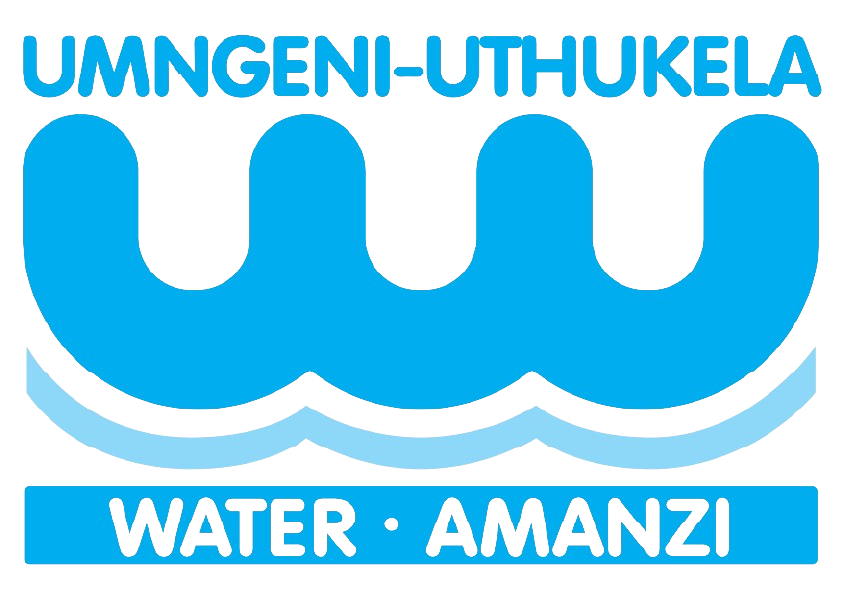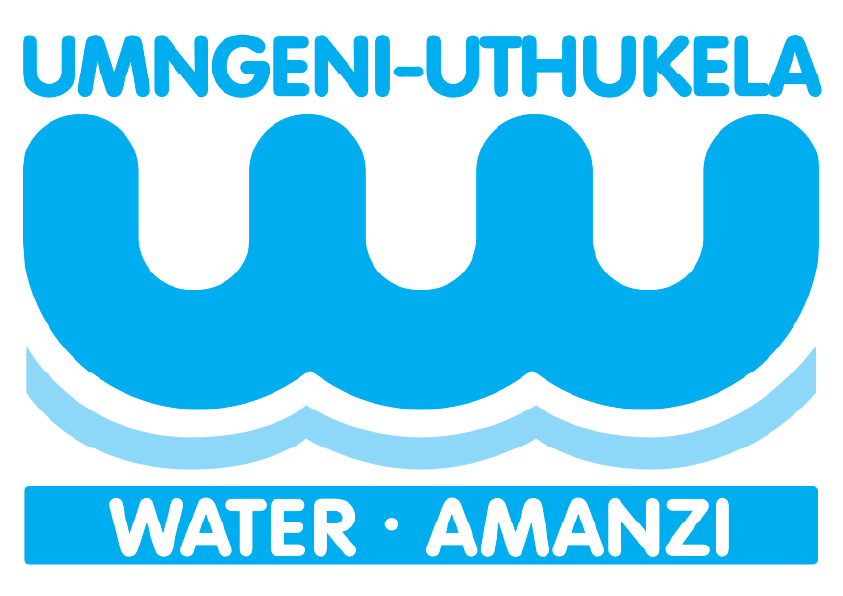Appointment of new Chief Executive for uMngeni-uThukela Water
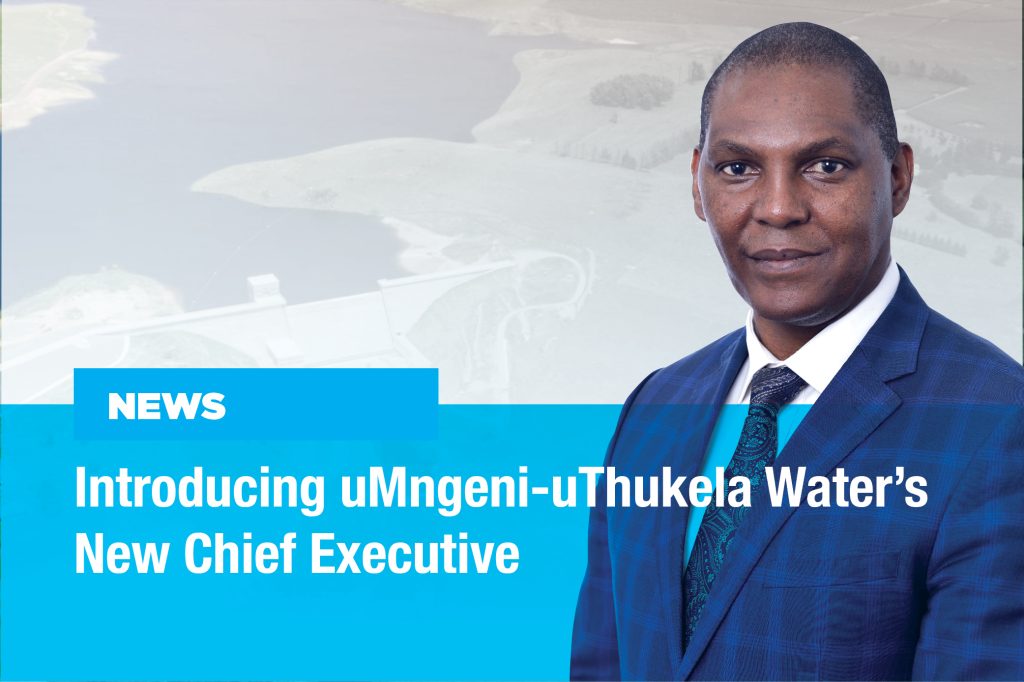
Sandile Mkhize returns to KZN to share experience and knowledge:The new CE of uMngeni-uThukela Water is living proof that, when a village raises a child, the adult returns the blessings many-fold. In taking up the post of Chief Executive of uMngeni-uThukela Water, Sandile Mkhize is returning home to give the province of KZN the benefit […]
MEDIA AND PUBLIC NOTICE: Interruption of Water Supply to Parts of the Ugu District After Storm Damage to Mthwalume Water Treatment Works
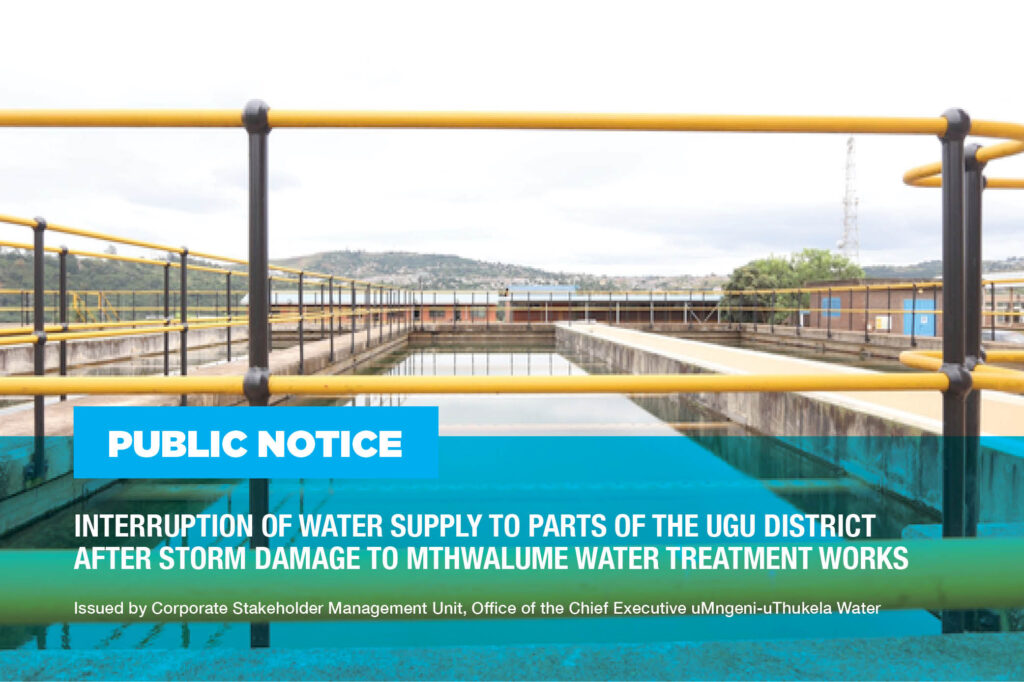
Monday, 15 January 2024 The heavy rains over the weekend have caused damage to the Mthwalume Raw Water Abstraction System which supplies water to the uMzumbe and uMdoni Local Municipalities under the Ugu District. The temporary weir which draws water from the Mthwalume River was washed away and the Treatment Plant is no longer able […]
El Niño Update – December 2023
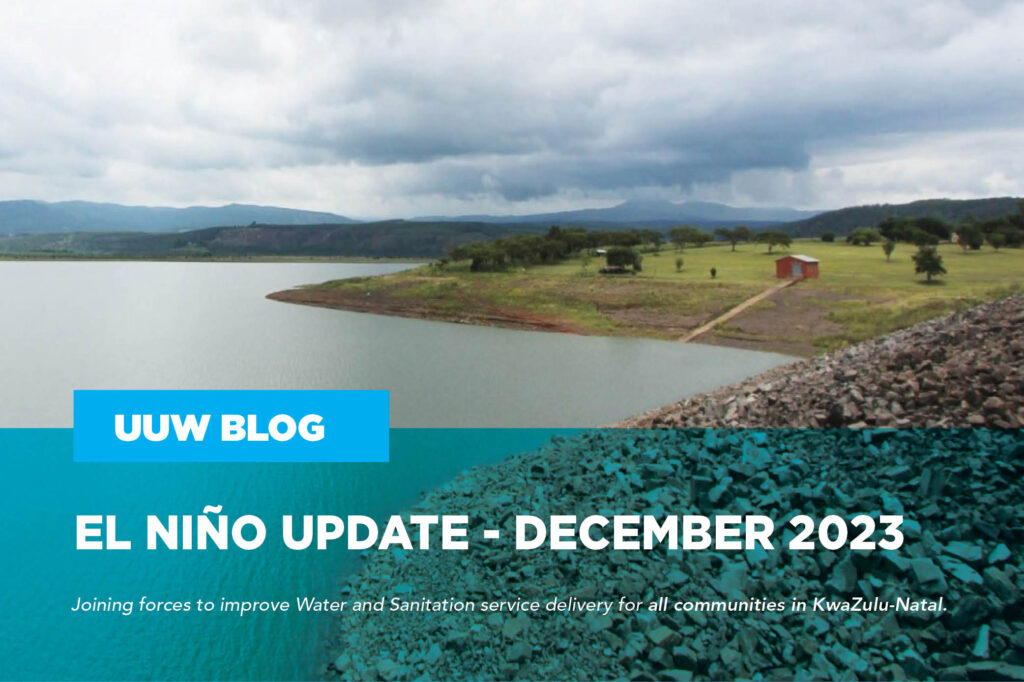
El Niño Update – December 2023 By Mlungisi Shabalala, 01 January 2024 The latest assessment of the El Niño Southern Oscillation (ENSO) signal shows that the key oceanic and atmospheric variables in the central-eastern equatorial Pacific Ocean remain consistent with the ongoing strong El Niño conditions. Almost all climate models suggest sustenance of the strong […]
El Niño Update – November 2023
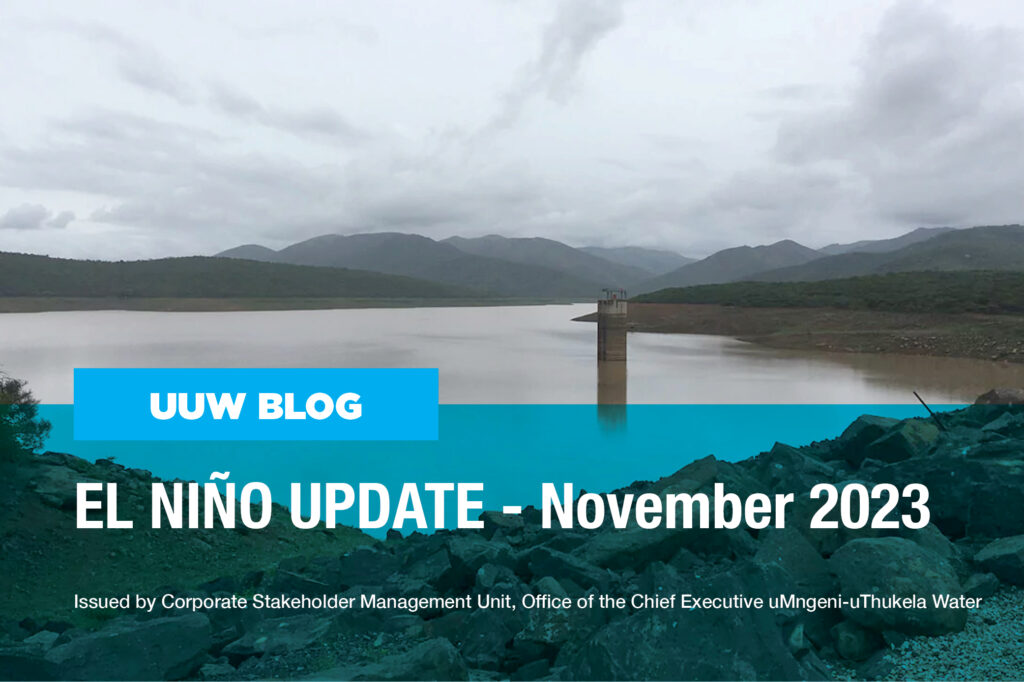
El Niño Update – November 2023 By Mlungisi Shabalala, 30 November 2023 uMngeni-uThukela Water (UUW) continues to monitor the El Niño Southern Oscillation (ENSO) signal and its potential impacts on water resources operated by UUW. The latest climate model updates indicate that the ENSO remains in an El Niño state (Australian Bureau of Meteorology; International […]
El Niño Update – October 2023
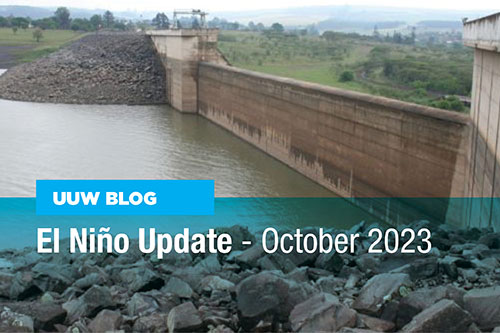
By Mlungisi Shabalala, 31 October 2023 uMngeni-uThukela Water (UUW) continues to monitor the El Niño Southern Oscillation (ENSO) signal and the latest model updates indicate that the ENSO remains in an El Niño state (Australian Bureau of Meteorology; International Research Institute for Climate and Society). According to the International Research Institute for Climate and Society, […]
El Niño Update – September 2023
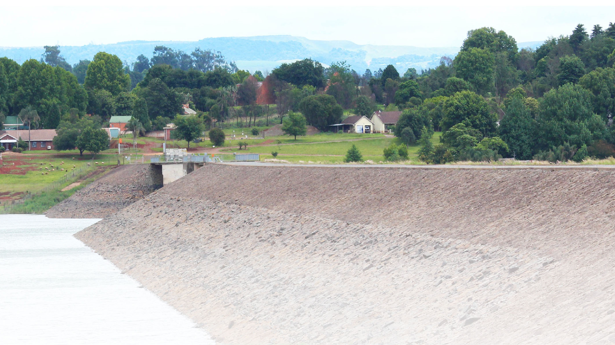
El Niño Update By Mlungisi Shabalala, 29 September 2023 uMngeni-uThukela Water continues to monitor the El Niño Southern Oscillation (ENSO) signal and, according to Australia’s Bureau of Meteorology, the ENSO is currently in an El Niño state. This is in line with the latest ENSO status and projections published by the International Research Institute for […]
El Niño Update – August 2023
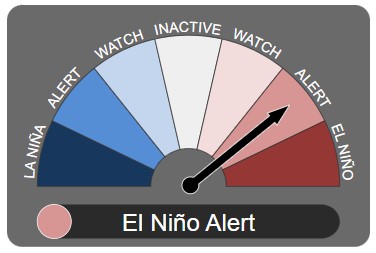
El Niño Update By Mlungisi Shabalala, 31 August 2023 uMngeni-uThukela Water continues to monitor the El Niño Southern Oscillation (ENSO) signal. The latest ENSO status and projections published by the International Research Institute for Climate and Society on 10th August 2023 indicate a 100% likelihood of El Niño throughout the upcoming spring season. This strong […]
STATEMENT: Heavy downpours cause damage to uMngeni-uThukela Water infrastructure
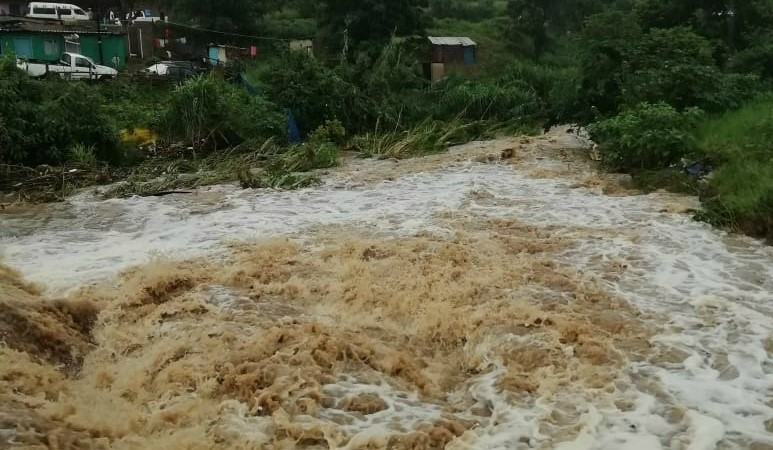
[vc_row][vc_column][vc_column_text][/vc_column_text][/vc_column][/vc_row]
